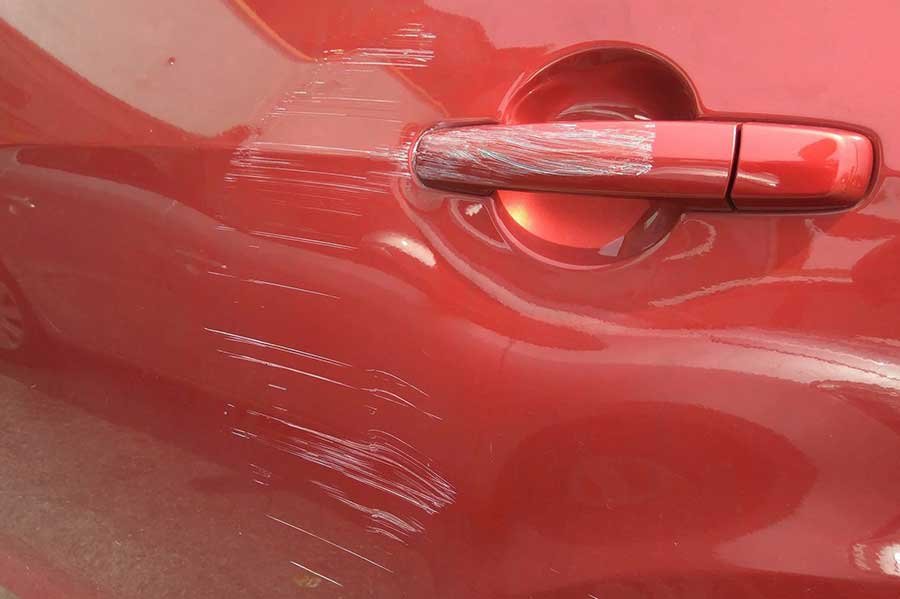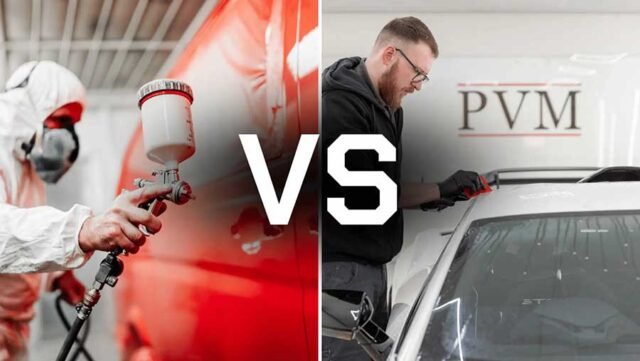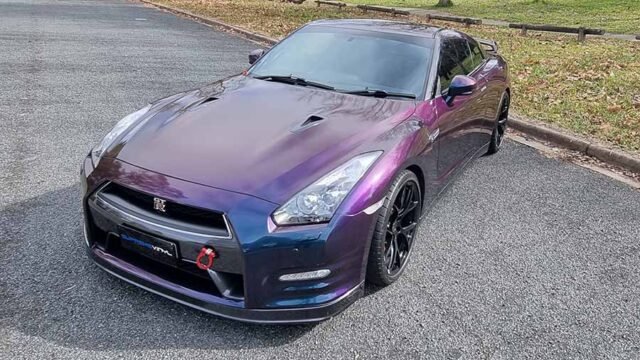Vinyl wrapping has become one of the most popular and cost-effective ways to transform a vehicle’s appearance without the commitment of a full respray. However, when your vehicle isn’t in perfect shape, you might wonder: can you apply a vinyl wrap over body damage or imperfections? The short answer is yes—but there are some crucial things you need to know before wrapping a damaged car.
In this article, we’ll explore whether vinyl wrap can be applied to a damaged car, what types of imperfections can be covered, and how body damage affects the final result. Whether you’re dealing with scratches, dents, or post-accident repairs, this guide will help you make an informed decision.
Can You Apply Vinyl Wrap Over Body Damage?
Vinyl wraps are thin, adhesive films that are applied directly over a car’s paint. While they are flexible and versatile, they don’t work like magic. Vinyl wrap on a damaged car can highlight flaws instead of hiding them, depending on the nature and severity of the damage.

Technically, vinyl can be applied to almost any surface, even one with imperfections. But the real question is: should you? The answer depends on several factors, including the type and extent of the body damage, your expectations for the finish, and how long you want the wrap to last.
Wrapping Over Scratches: Minor vs. Deep
If your vehicle only has minor surface scratches, you’re in luck. Most of the time, a vinyl wrap will adhere well and can even hide those light blemishes. These shallow scratches don’t typically affect the adhesion of the wrap, and the vinyl will lay relatively flat over the surface, masking imperfections effectively.
However, deep scratches are a different story. If the scratch penetrates through the paint and exposes the primer or metal beneath, the vinyl may not stick properly. Worse, the wrap could lift over time, especially at the damaged area. In such cases, it’s recommended to repair the surface before wrapping.

So, while wrapping a vinyl wrap over car imperfections like scratches is possible, deeper damage should be addressed first to ensure long-lasting results.
Wrapping Over Dents or Uneven Surfaces
Many people ask if it’s possible to apply a car wrap over body damage such as dents. The answer is yes, but it’s not ideal.
Vinyl conforms to the shape of the surface it’s applied to. That means any dent, ripple, or wavy panel will still be visible after the wrap is installed. In fact, sometimes a wrap can make dents even more noticeable, especially if you’re choosing a high-gloss or chrome finish that reflects light.
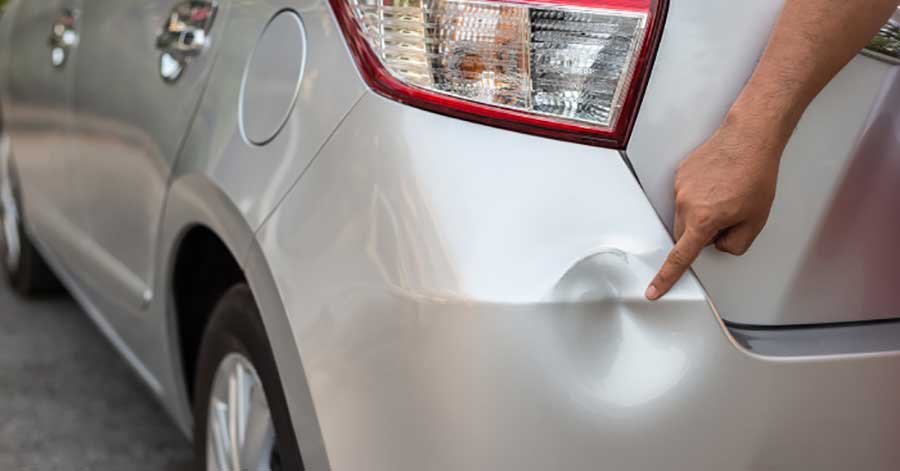
Additionally, uneven surfaces can create air pockets under the vinyl, reducing its ability to stick firmly. Over time, these weak spots can cause bubbling or peeling, drastically reducing the life of your wrap.
If you’re aiming for a clean, professional look, it’s better to repair the dented area before wrapping.
Should You Wrap a Car After an Accident Repair?
If your vehicle has recently been in an accident and has undergone body repairs, wrapping it can be a great way to protect the new paint or hide color mismatches. But timing and quality of the repair matter.
Freshly painted panels need time to fully cure—usually at least 30 to 60 days—before a wrap can be applied. Wrapping too soon can trap solvents under the vinyl, causing bubbling or lifting.
Moreover, poor-quality repair jobs with uneven filler or sanding marks will be visible through the vinyl wrap. So if you’re considering a vinyl wrap on a damaged car after an accident, ensure the repair has been done professionally and given enough time to cure.
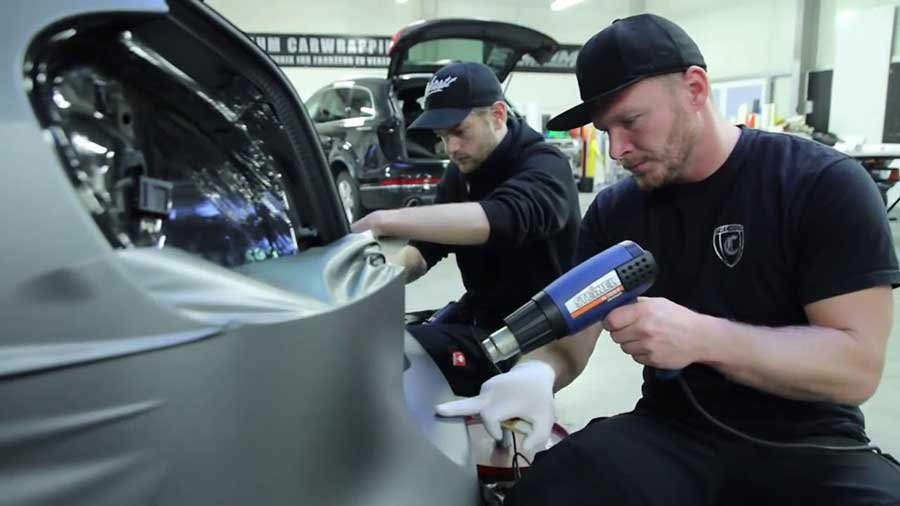
Can Vinyl Wrap Hide Imperfections?
This is one of the most common questions from car owners with minor damage: Can vinyl wrap hide imperfections? The answer is: sometimes, but not always.
Vinyl can cover up light scratches, faded paint, and very shallow dents reasonably well.
Matte or satin finishes are particularly good at hiding surface flaws because they diffuse light, minimizing reflections that reveal surface inconsistencies.
However, glossy or metallic wraps can accentuate even the smallest flaws due to their reflective nature. In these cases, imperfections like waviness or dented areas will still be visible, possibly even more than they were before wrapping.
So while vinyl wrap can provide some level of disguise, don’t expect it to fully cover up major imperfections without preparation.
How Body Damage Affects Wrap Longevity and Adhesion
One of the most important concerns when applying a vinyl wrap over imperfections is how body damage affects wrap longevity. The adhesion of vinyl wrap depends heavily on the surface beneath it.
Damaged areas—like chipped paint, rust spots, or filler—don’t offer the same smooth surface that clean, factory paint does. This can lead to early peeling, bubbling, or cracking in those areas.
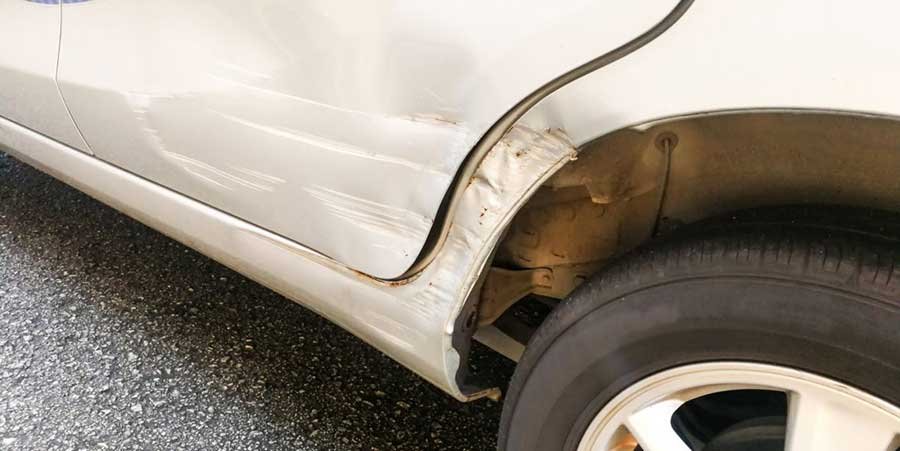
For instance:
• Rust under a wrap can continue to spread and weaken adhesion.
• Loose paint may lift off with the wrap when removed.
• Filler or body putty that’s not properly finished can lead to bubbling.
In short, while a wrap can be applied to a damaged surface, it won’t last as long or look as good as it would on a well-prepared car. If you want a durable and seamless finish, it’s best to fix major issues first.
Tips Before Wrapping a Repaired or Damaged Vehicle
If you’re still planning to apply a vinyl wrap on a damaged car, here are some tips to help improve results and extend the life of your wrap:
1. Fix Major Damage First: Repair dents, rust, and deep scratches. A little prep work goes a long way.
2. Sand Down Uneven Areas: Use filler or sanding to smooth out waves or high spots.
3. Use a Primer for Damaged Panels: A vinyl-safe primer helps improve adhesion in tricky areas.
4. Wait After Painting: If the car was freshly painted, wait at least 30 days before wrapping.
5. Choose the Right Finish: Satin or matte wraps are more forgiving on imperfect surfaces.
6. Work with a Pro: A professional wrap installer can evaluate your vehicle and suggest the best approach.
7. Set Realistic Expectations: A wrap can improve your car’s look, but it won’t be a miracle fix for major body issues.
Conclusion: Is It Worth Wrapping a Damaged Car?
So, is it worth applying a Car Wrap Over Body Damage? The answer depends on your goals.
If your vehicle has light imperfections and you’re looking for an affordable cosmetic upgrade, vinyl wrapping can still be a great choice—especially when done professionally with the right materials.
But if your car has major dents, deep scratches, or rust, wrapping it without repairs might lead to disappointment. The imperfections will likely still be visible, and the wrap may not last as long.
In the end, vinyl wraps are an investment—so to get the most value out of them, it’s best to start with a surface that’s as clean and smooth as possible.
Before wrapping your vehicle, be honest about the condition of your car and talk to a professional installer. With the right preparation, even a previously damaged car can turn heads with a fresh, new look.



